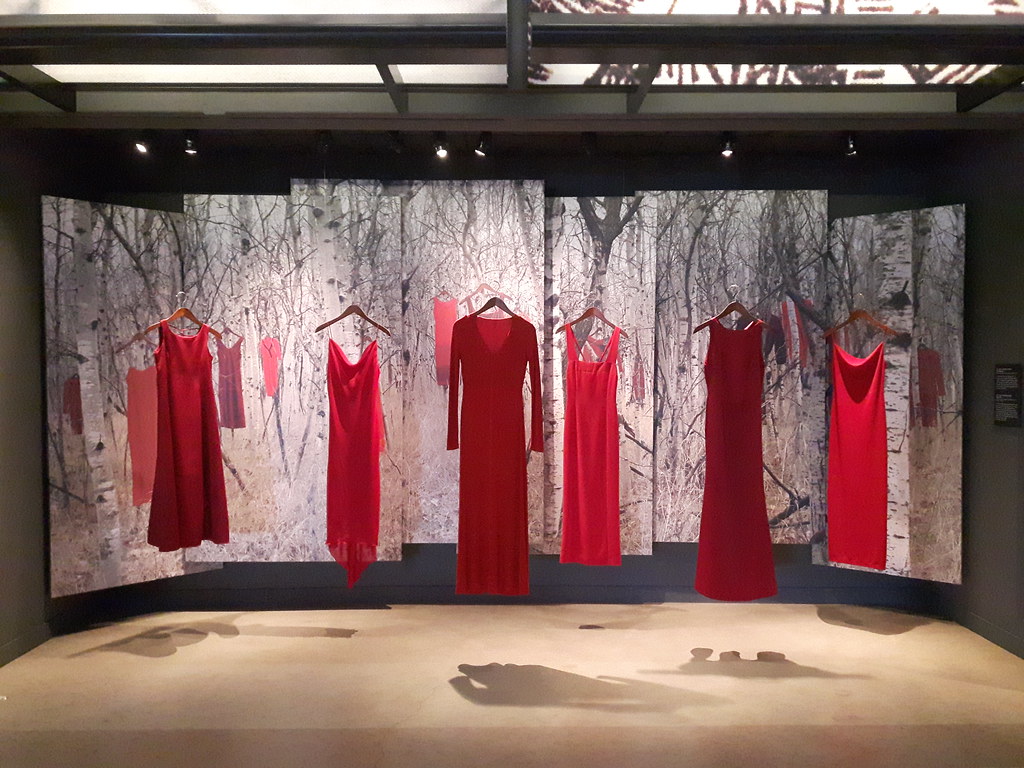REDress Project – Missing and Murdered Indigenous Women
Throughout this week you may have noticed red paper dresses appearing in the student center, but if you have not taken the time to scan the QR codes around the stairs, you may not get the big picture. This last week marked the beginning of Native American Heritage Month and as part of our observation, the Dub has partnered with NASA to bring an interpretation of the REDress Project to our campus. Jamie Black, a Métis artist from Saskatchewan, started the project in 2011 and it has been replicated in many places around North America, including the Smithsonian’s National Museum of the Native Indian.
As a white woman from a predominantly white area who attends a school that has historically been subpar at being inclusive of BIPOC, I have previously had limited knowledge of this crisis. In order to educate myself and to share with the university, I not only researched independently, but I reached out to Sarah Konwahahawi Rourke. Sarah is a SLU alumnus that is an Akwesasne Mohawk National and the deputy director of the Native Organizers Alliance. She not only provided me with ample resources and connections, but she was able to give me the perspective that I lack as a white person.
The premise of this genocide is that Indigenous women and girls are going missing and being murdered at rates that are disproportionately higher than other groups in the US and Canada because institutional racism suppresses all aspects of a possible resolution. According to the Urban Indian Health Institute, the third most common cause of death in Indigenous women, trans folk, and two-spirit people is murder. I feel as though I do not need to elaborate on the absurdity of that statistic. The failure of protection and adequate investigation for Missing and Murdered Indigenous People (MMIP: primarily women, girls, transgender women, and two-spirit people) begins with policy and policing but expands through media coverage and allyship.
The bulk of efforts in the reform and data collection has been initiated by volunteers, specifically friends and family members of the victims. After immense pressure from activists, Canada finally recognized the MMIP as a genocide last year but has not done anything to improve the mass murder and trafficking. The US Department of the Interior has acknowledged the shortcomings of The Violence Against Women Act (VAWA) and the Tribal Law and Order Act (TLOA), which were put into effect to help protect Indigenous Women but have not shown any results under this administration. The Urban Indian Health Institute attempted to gather data from 71 cities across the US but received less than helpful feedback half the time if any at all. This lack of communication and organization when it comes to MMIP is a common theme in the US so volunteer organizations, such as Sovereign Bodies Institute in California, are working on developing a database to make the information more accessible.
On a societal level, the mistreatment of Indigenous people, especially women, has been a common theme in the US and Canada, primarily due to the colonial heritage of dehumanizing non-white bodies. Systemic microaggression such as police insinuating that missing girls ran away due to poor quality of life or unhealthy lifestyle result in the undermining of missing person investigations. In too many cases related to sex work, murder was reduced to an accident caused by sex going too far. The Urban Indian Health Institute found that 96/506 cases of MMIP had to do with sexual or domestic assault, police brutality, and sex work.So, what can you do on campus to be an ally? First and foremost, you can join NASA, by emailing Melissane Schrems at mschrems@stlawu.edu, to be involved with advocacy on campus and staying up to date with events. To learn more about this genocide and how to be a good ally, I recommend visiting the Illuminates and NDN collective and listen to Native voices.



